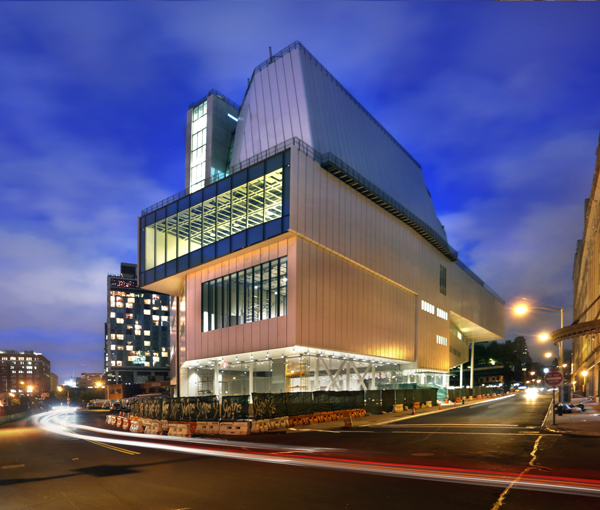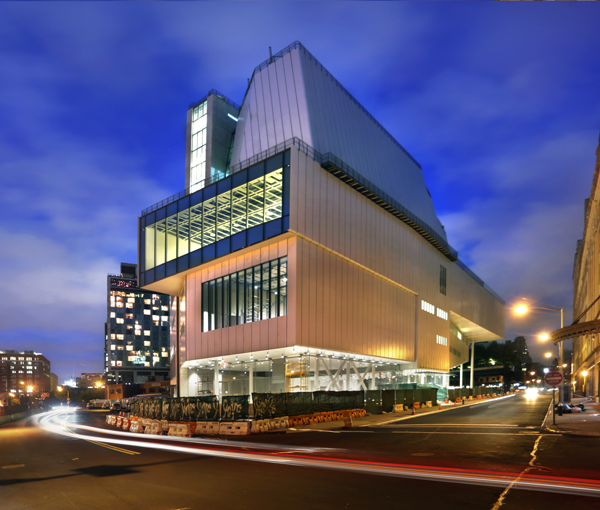
BY EILEEN STUKANE | The Whitney Museum did what artists have done for decades. It pulled up stakes and left home — in this case, Madison Ave. and E. 75th St. — to be creative in the Village.
To be more exact, though, the Whitney is really coming home, since it was in Greenwich Village that the museum was founded in 1931.
The Whitney’s new, asymmetrical Renzo Piano-designed building, on Gansevoort St. between the High Line and the West Side Highway, is set to open in less than five months from now, on May 1. The Whitney is the first major cultural institution to come Downtown, perhaps drawn by the energy of a neighborhood already in the throes of transformation. Anticipation is high.
David Gruber, outgoing chairperson of Community Board 2, believes that the Whitney will become a “huge asset to the Village.”
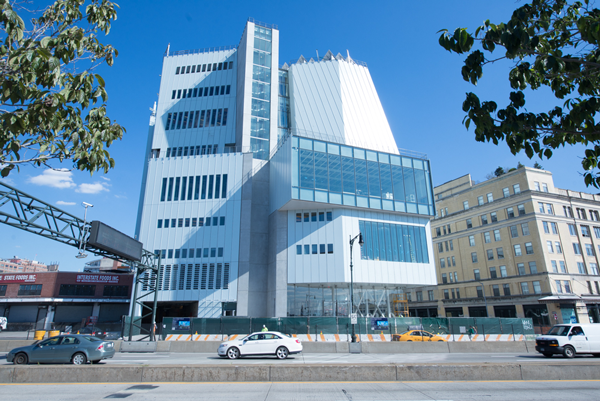
The museum, he pointed out, is actually part of a growing “ribbon” of culture and entertainment on the West Side that currently notably includes the Chelsea gallery district, High Line park, Meatpacking District, Chelsea Piers and Chelsea Market.
Adding to that will be projects coming down the pike, including the Hudson Yards’ planned Culture Shed at the High Line’s northern end; the new SuperPier at Pier 57 (a $200 million food and retail development at W. 17th St.); and Pier55 (a planned 2.7-acre Hudson River Park arts-and-entertainment pier at W. 13th St.).
All this is happening along a river that in the past was home to railyards and decaying piers.
The elevated High Line park, with its southernmost entrance on Gansevoort St., is a major presence in the Village as it draws more than 5 million visitors annually. But the community knows that the Whitney, with its global reach, will be another significant enterprise that will alter the atmosphere.
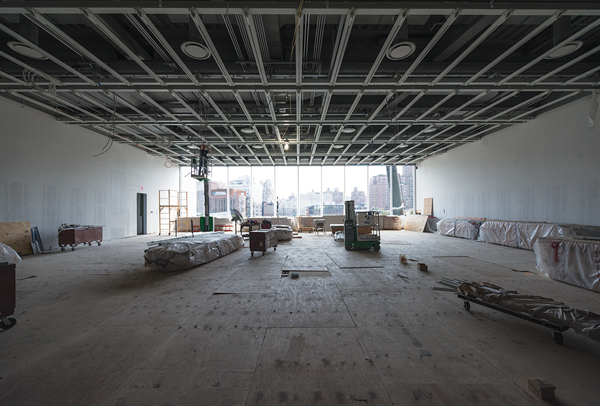
And the Whitney knows it, too. For two years the museum has been reaching out to neighborhood groups and schools to establish a relationship with the community before opening. And the community has been responsive.
“What can a museum do for a community? All of my work has been about answering that question,” said Kathryn Potts, the Helena Rubinstein Chairperson of Education at the Whitney. She explained that in the early planning stages for its Downtown museum, the Whitney created a stakeholders group — the Whitney Education Community Advisory Network, or WECAN, which has been meeting regularly during the last two years.
“The idea was that we needed to hear from people within the community about what they thought were their priorities for the institution,” she said. “We felt that we really needed those voices.”
WECAN includes representatives from Westbeth, the Fulton Houses, C.B. 2, the Hudson Guild and P.S. 33, which is a Title I elementary school in Chelsea that has been a partner school of the Whitney for at least five years.
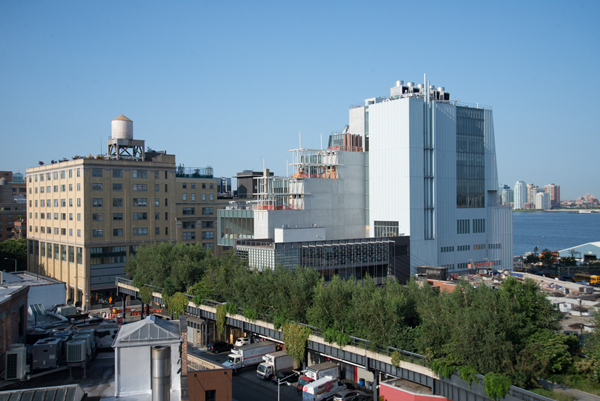
In addition, the Whitney started short-term pilot programs with the Village’s L.G.B.T. Community Center and FIERCE, the L.G.B.T. organization for youth of color, and reached out to a slew of other schools, including Village Community School, P.S. 3, P.S. 41, P.S. 11, Humanities Preparatory Academy, Lab School, High School of Fashion and Industry, and Clinton School for Writers and Artists, and when it opens, will approach the 75 Morton St. middle school.
“We try to offer the opportunity to see the museum as an extension of the classroom,” Potts said. “And in the future, we hope to have eight partnership schools where we would work with administration, teachers and students to become a resource for them.”
To that end, the new Whitney will have an educational center with state-of-the-art classrooms, a multiuse black-box theater for film, video and performance, a works on paper study center, conservation lab and library reading room, none of which were in the Uptown Whitney.
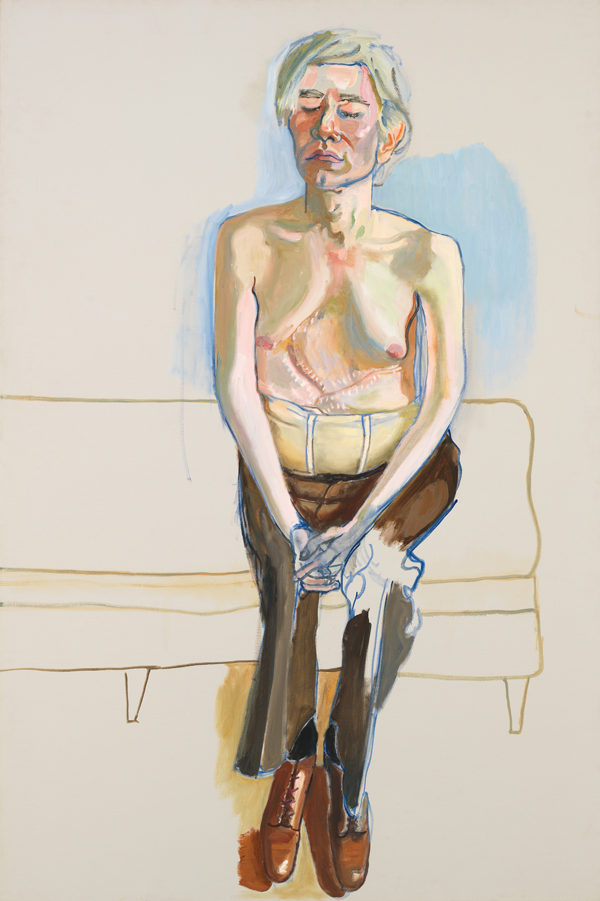
Madelyn Wils, president of the Hudson River Park Trust, cited two art installations in the waterfront park that were accomplished in collaboration with the Whitney in the past: Yayoi Kusama’s “Guidepost to the New Space” installation at Pier 45 (Christopher St. Pier) in 2012, and Tony Tasset’s “Artists Monument” installation near W. 17th St. in 2014.
“We look forward to doing more art projects in the park with the Whitney,” Wils said. “We think the museum is a great addition, and the Whitney is open to having the park be an outdoor display for them when it’s appropriate, when it’s right.”
Technically speaking, the Whitney’s new home is really in the Meatpacking District.
“There’s anticipation of a world-class institution coming to a neighborhood that is experiencing a rebirth around culture and technology, as well,” said Lauren Danziger, executive director of both the Meatpacking Improvement Association and Chelsea Improvement Company.
“The Whitney brings art as culture to the forefront and day-to-day relevance for both visitors and the people who work here on a daily basis,” she said. “It’s very exciting, not just as a development but as an opportunity for the neighborhood as a whole. There’s palpable excitement.”
Words like “rebirth,” “transformation,” “evolution” and “transition” were mentioned by everyone interviewed for this article, in relation to the current state of Greenwich Village and the Meatpacking District. Danziger spoke of a “complete change” on Washington St. in the last two years as small boutiques have opened in preparation for the Whitney’s arrival.
Guenter Seeger, the elite chef, hopes to open a 42-seat tasting restaurant at 641 Hudson St. near Horatio St. due to the Whitney being just a few blocks away. C.B. 2, however, recommended denial of Seeger’s application for a liquor license. It’s now up to the State Liquor Authority to make the decision.
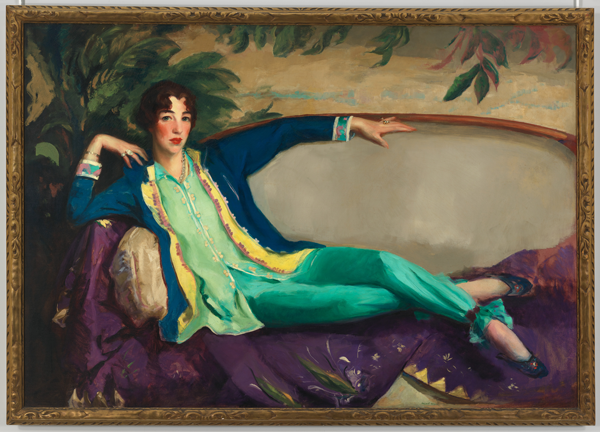
In addition, there has been a surge in new, innovative technological spaces, as fashion-designer retail has moved away from the Meatpacking District. Google’s massive headquarters at 76 Ninth Ave. and Apple’s store on the northwest corner of W. 14th St. and Ninth Ave. have no doubt attracted more technological ventures, with the Whitney being an added inducement.
In leases that were signed this year, Samsung plans to open new offices on Washington St. near the new Whitney, while Intersect by Lexus on W. 14th St., will be a venue that goes beyond a car showroom to incorporate design, art, fashion, film, dining, music and technology.
Commercial mixes, which the museum will also have, are starting to pop up, with Rapha Cycle Club on Gansevoort St. also including a cafe, and Rag & Bone General Store on W. 13th St. featuring Jack’s Stir Brew Coffee.
“The Meatpacking District is a global destination,” said Danziger, “and these changes, these new businesses, these new cultural institutions, technological hubs, are just shining a different light on an already-vibrant community.”
Of course, the High Line is another huge tourist magnet.
“The Whitney is a mature, interesting organization that I think is going to add a whole new element to the neighborhood,” said Peter Mullan, executive vice president of Friends of the High Line.
The High Line has an art program and an educational program, as does the Whitney.
“We’re trying to identify ways that we can collaborate,” Mullan said.
Although the Whitney will be a game-changer on a major scale, those involved with the museum show an awareness of the surrounding neighborhood, and especially of the landmarked Meatpacking District’s historical importance.
“We realized that there was a lot of work that needed to be done to understand the community we were moving into,” Potts said. “We researched demographics, community board assessments, the history of the neighborhood, and also the history of artists who have worked, and are working Downtown.
“We were determined not to open our doors on our first day as if we were a giant spaceship that landed at the base of the High Line, and we say, ‘Hello, come on in.’ Our first step was getting to know the community.”



